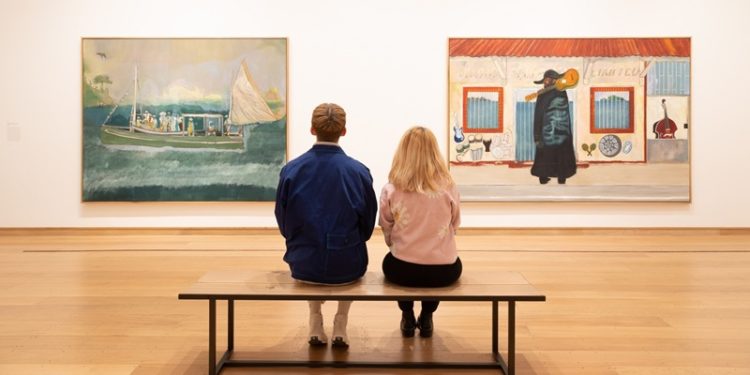Peter Doig, a British-born modern painter, is known for his climatic, dreamlike scenes that mix memory, myth, and nature. His canvases are not fair representations of the common world; they are reminiscent visual stories that welcome watchers into a domain of contemplation and feeling. Doig’s work talks to the crossing point of the individual and the all-inclusive, with scenes frequently acting as allegories for mental and enthusiastic states.
The Influence of a Place
Doig was born in 1959 in Edinburgh, Scotland, but his roots follow back to Canada, Trinidad and the UK. These moves of area, without a doubt, have been joined into his work, which frequently draws on the particular scenes of the Caribbean and Canada and the national and urban scenes of Europe. His abnormal combination of impacts and approach to representation — thick, impasto paint and layered compositions — have made him one of the primary noteworthy painters of his era.
Peter Doig paintings are regularly occupied by figures, whether they are separated figures within the middle of endless, destroyed spaces or human outlines on the edge of water. These figures, in spite of the fact that they are frequently unclear, are central to his works, including a component of account to something else disconnected situations.
Painting Memory
One of the foremost critical perspectives of Doig’s practice is his capacity to make a sense of confusion inside the watcher. His canvases regularly obscure the lines between reality and memory, creating a climate of instability and uncertainty. Doig has depicted his work as an investigation of memory and the way in which it mutilates time and place. In works just Like the Architect’s Domestic within the Gorge (1991), the painted scene feels both recognizable and remote, challenging the watcher to accommodate the conflicting sentiments emerging.
In parallel to Doig’s rise as a driving modern painter, an understated era of Black female artists has developed, picking up acknowledgment for their work that examines character, race, and gender inside the setting of modern craftsmanship. Craftsmen like Kehinde Wiley, Mickalene Thomas, and Kara Walker have picked up worldwide recognition for their capacity to reflect the complexities of Black encounters within the advanced world, making critical commitments to the broader account of modern craftsmanship. These craftsmen have affected the discussions almost by representation, celebrating Black culture and countering verifiable generalizations.
Domestic Space and Black Identity
Mickalene Thomas, for occurrence, is known for her dynamic and lavish representations of Black ladies, frequently integrating elements of home life and deliberation into her works. Her exploration of excellence, personality, and race in her work mirrors a few of the subjects found in Doig’s craftsmanship — especially the ways in which scenes and figures meet to form visual representations of personality. Doig’s depictions, like those of Thomas, frequently include subjects who are deeply associated with their environments, whether that environment is a preoccupied scene or a luxuriously layered household interiors.
Essentially, Kara Walker’s confrontational images, which appropriately address aspects of race, power, and history, delve into the blacker, often neglected elements of American history. Compared to Doig’s slower and more ambiguous work, Walker’s work brings forth elements of memory, history and trauma, but in a more direct, politically charged fashion. Both artists, in their own media, challenge viewers to think about the different crossways encountered in place, identity, and narrative.
Different Histories
Doig’s work frequently appears to inquire questions instead of give answers, clearing out watchers to decipher the meaning behind his figures and scenes. This same ambiguity is displayed within the works of Black female artists, who regularly challenge oversimplified elucidations of their craftsmanship and characters. Fair as Doig employs the normal world to investigate memory and enthusiastic scenes, these specialists investigate the passionate and mental effect of race and history on the Black encounter.
After examining the work of Peter Doig and near the occurrence of Black female artists, we see a common focus on the complexity of identity – how we develop it, remember it, and express it. Both Doig and these artists use their art to reflect on the relationship between personal and community histories, inviting viewers to engage with their works on a deeper emotional level.
A More Inclusive Canon
Nowadays, the victory of specialists like Doig, Thomas, and Walker talks to the growing boundaries of modern craftsmanship, where stories that were once marginalized are presently taking center stage. The rise of Black female artists, in specific, signals a turning point within the craftsmanship world, where assorted voices are being listened to and celebrated for their unique perspectives. Doig’s capacity to make works that reverberate candidly and mentally, whereas moreover challenging recognitions of scene and character, proceeds to motivate craftsmen over disciplines.
Photo Credit: “Scottish National Gallery, Academy Entrance – Doig Exhibition” by Brian McNeil.











































































